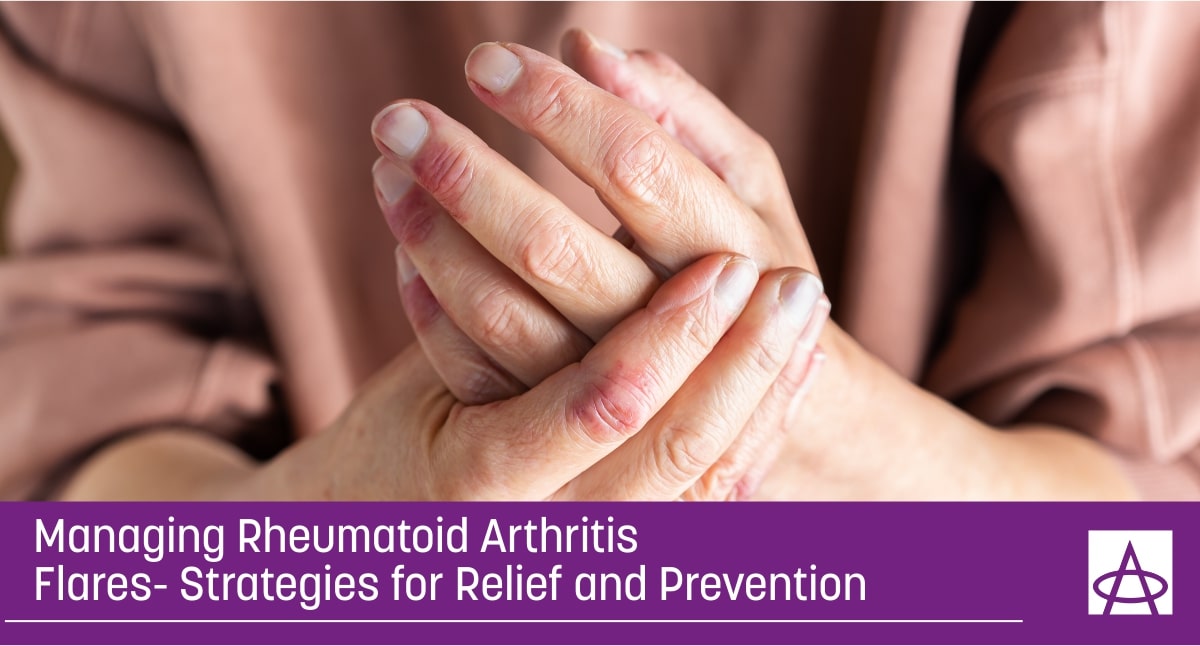
How Do Osteoarthritis and Rheumatoid Arthritis Affect Joints?
Joint pain can take away life’s simple pleasures, turning everyday tasks into exhausting challenges. Arthritis affects millions worldwide, leading to inflammation, pain, and stiffness in the joints, which can significantly disrupt daily life – osteoarthritis (OA) and rheumatoid arthritis (RA) are the most common. While both conditions impact joint health, they have different causes, symptoms, and treatment options. Understanding how osteoarthritis and rheumatoid arthritis affect joints can help with early diagnosis and effective management.
If you suspect you may be experiencing arthritis, it’s essential to consult with a specialist. Advanced Pain Care specializes in pain management across various locations – Austin, Killeen, Waco, and Amarillo – offering tailored treatment options to meet your needs. Visit us today for personalized counseling and treatment.
What is Osteoarthritis (OA)?
Osteoarthritis is a degenerative joint disease resulting from the wear and tear of the joints. It is often associated with aging but can also develop after an injury.
Key causes of OA include:
- Degeneration: Over time, the cartilage cushioning the joints breaks down and causes friction between bones.
- Aging: The risk of developing OA is higher with age as the body’s ability to repair cartilage reduces.
- Injury: Previous injuries like fractures or ligament tears can increase the risk of osteoarthritis later on.
Joints like knees, hips, hands, and spine are most commonly affected by osteoarthritis.
How Osteoarthritis Affects Joints
As osteoarthritis progresses, several changes occur in the joints:
- Breakdown of Cartilage: The protective cartilage deteriorates, exposing the underlying bone.
- Bone-on-Bone Friction: Without adequate cartilage, bones rub against each other, causing pain and inflammation.
- Development of Bone Spurs: As the body tries to repair itself, bony growths called bone spurs can develop around the joints.
Symptoms of osteoarthritis may include:
- Pain during movement
- Stiffness, usually during the morning or after sitting for a prolonged time
- Reduced range of motion
With time, OA can lead to increased pain and decreased mobility. Risk factors for developing this condition include age, weight, and activity level. However, a healthy lifestyle can prevent osteoarthritis and ease its symptoms.
What is Rheumatoid Arthritis (RA)?
Rheumatoid arthritis is an autoimmune disorder. In this case, the immune system mistakenly attacks joints, causing persistent inflammation and tissue damage. Over time, this can lead to severe joint pain, swelling, stiffness, and even deformities, significantly affecting mobility and quality of life.
The main characteristics of RA include the following:
- No clear external cause: Unlike OA, RA is driven by an autoimmune response causing inflammation in the joints.
- Common Joints Affected: RA primarily affects the hands, wrists, and feet.
For those seeking relief, understanding rheumatoid arthritis treatment options is essential. Discuss your symptoms with one of our specialists to find a suitable treatment for your pain.
How Rheumatoid Arthritis Affects Joints
Rheumatoid arthritis impacts joints in several significant ways:
- Inflammation of the Synovium: The lining of the joints becomes inflamed, leading to pain and swelling.
- Immune System Attack: The immune system’s misguided attack on joint tissues causes further damage and pain.
- Joint Swelling, Pain, and Warmth: Affected joints may feel warm, swollen, and painful, especially during flare-ups.
Long-term consequences of RA include:
- Erosion of Cartilage and Bone: Ongoing inflammation can erode cartilage and bone, leading to joint deformities.
- Flare-Ups and Periods of Remission: Patients often experience cycles of increased symptoms (flare-ups) followed by periods of relief (remission).
Proactive joint care programs developed by specialists are important in managing both conditions so that you can carry your everyday life easily.
Comparing OA and RA: Key Differences
Understanding the differences between OA and RA helps with the effective management of your pain.
Criteria |
Osteoarthritis (OA) |
Rheumatoid Arthritis (RA) |
| Cause | Mechanical wear and tear of joint cartilage over time | Immune system-driven inflammation attacking the joints |
| Symmetry | Typically affects specific joints (often unilateral) | Usually affects joints symmetrically (both sides of the body) |
| Age Groups | Common in older adults (50+ years) | Can occur at any age, often starting in middle adulthood (30-50 years) |
| Joint Involvement | Affects weight-bearing joints (knees, hips, spine) | Affects small joints (hands, wrists, feet) |
| Inflammation | Minimal to moderate inflammation | Severe joint inflammation, often with swelling and redness |
| Morning Stiffness | Brief, lasting less than 30 minutes | Prolonged, lasting over an hour |
| Systemic Symptoms | Localized to the joints | Can involve systemic symptoms (fatigue, fever, weight loss) |
| Progression | Gradual progression over the years | Can progress rapidly within weeks to months |
| Gender Predominance | It affects both genders equally, though slightly more common in women | More common in women (3:1 ratio compared to men) |
| Treatment Focus | Pain management, physical therapy, and joint replacement | Immunosuppressive therapy and disease-modifying drugs |
| Risk Factors | Age, obesity, joint injury, repetitive stress on joints | Genetics, hormonal factors, smoking, environmental triggers |
Your arthritis doctor can accurately assess the main cause of your condition and recommend the right invasive or non-invasive therapy for relief.
Managing Joint Health with Arthritis
A reliable pain management plan for arthritis is needed for maintaining joint health. Treatment options differ between OA and RA:
- Osteoarthritis Treatment:
- Pain Relief: Over-the-counter medications, such as acetaminophen or NSAIDs, can help manage pain.
- Physical Therapy: Strengthening exercises can improve joint function and reduce stiffness.
- Surgery: In severe pain conditions, surgical options like joint replacement may be needed.
- Rheumatoid Arthritis Treatment:
- Medications: Disease-modifying antirheumatic drugs (DMARDs) and biologics help manage inflammation.
- Lifestyle Changes: A balanced diet and regular exercise can improve overall health.
- Physical Therapy: Similar to OA, therapy can help with joint function and mobility.
Timely prevention, diagnosis, and treatment can help you effectively manage arthritis conditions.
When to See a Doctor at Advanced Pain Care
Knowing when to seek medical attention is necessary for effective arthritis management. Key signs that warrant evaluation include:
- Persistent joint pain that doesn’t improve with rest
- Swelling or warmth around the joints
- Stiffness that persists longer than 30 minutes in the morning
Searching for “osteoarthritis doctors” or “rheumatoid arthritis doctors near me?” Advanced Pain Care can provide expert care and offer the best treatments for your pain conditions. Our commitment to innovation, patient-centered care, and specialized treatment options make us a trusted choice for arthritis management across Central Texas.
Contact us today to book an appointment and have our specialists provide you with the best arthritis care.






